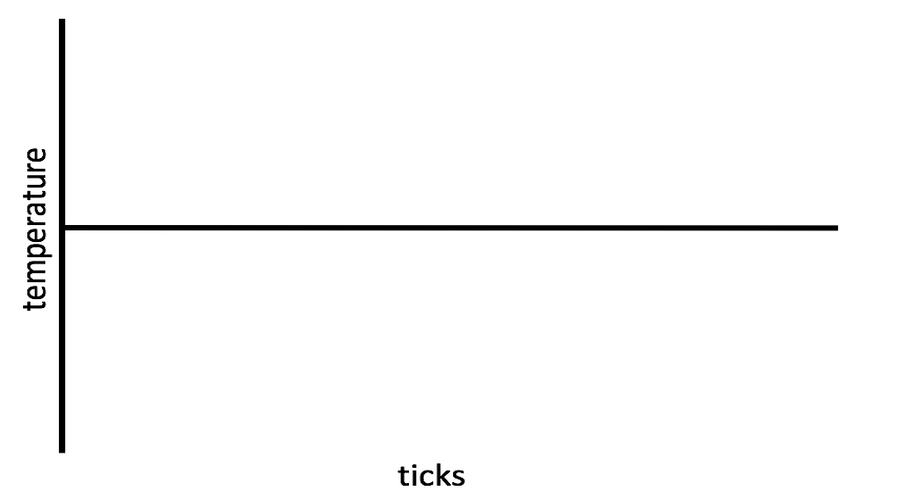How does temperature impact the interactions of air particles?

Overview
In the last activity you explored how air particles inside of a syringe act when pushing and pulling on the plunger. In this next activity you'll explore how those same air particles act inside of a syringe when the temperature of the air is also changed.
Standards
Computational Thinking in STEM
- Computational Problem Solving Practices
- Developing Modular Computational Solutions
Acknowledgement
Cite the Modelsim research
Activities
- 1. Brainstorm
- 2. Exploration 1 - Demo
- 3. Exploration 1 - Predict
- 4. Exploration 1- Procedure
- 5. Exploration 2
- 6. Exploration 2 - Experiment
Student Directions and Resources
 In the last activity, you explored how air particles inside of a syringe act when pushing and pulling on the plunger. In this next activity, you'll explore how those same air particles act inside of a syringe when the temperature of the air is also changed.
In the last activity, you explored how air particles inside of a syringe act when pushing and pulling on the plunger. In this next activity, you'll explore how those same air particles act inside of a syringe when the temperature of the air is also changed.
Purpose: How does temperature impact the interactions of air particles?
1. Brainstorm
Read the brainstorm topic questions below, then write your response.
Question 1.1
Question 1.2
How might changing the temperature of the air inside the syringe, impact the interactions between the air molecules?
2. Exploration 1 - Demo
GOING TO PLACE A VIDEO HERE THAT SHOWS AN EXPERIMENT IN WHICH A SYRINGE IS CONNECTED TO A FLASK. THE EXPERIMENTER HEATS THE AIR INSIDE THE FLASK BY COVERING IT WITH HIS HANDS AND DEMONSTRATES HOW THE POSITION OF THE PLUNGER.
In a moment your teacher will be demonstrating an interesting phenomenon. Make careful observations and record them in question 1 below. Then answer the following questions.
Question 2.1
1. What are some changes you observed occur in the glass syringe system during the demonstration?
Question 2.2
2. Why do you think the syringe behaved in the way it did?
Question 2.3
3. What was the independent variable in the demonstration (what condition did the teacher change that then led to the changes in the behavior of the system)?
Question 2.4
4. What was the dependent variable in the demonstration (what property of the system appeared to be affected by the change the teacher made)?
3. Exploration 1 - Predict
Keep thinking about your teacher's demonstration.
Question 3.1
Sketch a graph showing the plunger level graph as it changed over the course of the demo.

Question 3.2
Sketch a graph showing the temperature of the air inside of the flask as it changed over the course of the demo.

4. Exploration 1- Procedure
We are now going to experiment with another version of the Virtual Syringe model, this time through manipulating a temperature graph instead of a force graph.
- Set the MOUSE-INTERACTION chooser to anything that isn't "none - let particles move".
- Press SETUP, and then GO/STOP/ADD ELEMENTS to run the model.
- Set the MOUSE-INTERACTION to “draw basic wall” or “draw red removable wall” or “draw blue removable wall”. Then add a wall to the bottom of the syringe so that its end is capped and the inside of the syringe is a closed system.
- Set MOUSE-INTERACTION to “add green particles”. Add particles to both the outside and inside of the syringe. Set the MOUSE-INTERACTION chooser to "none - let particles move" and let the model run until it has reached equalibrium and looks similar to the picture to the right
- Set MOUSE-INTERACTION to "choose heat/cool region" and then click a spot inside of the closed syringe chamber. This region should temporarily fill up with a brown color to show it has been selected.
- Click "Draw Temp vs Time Graph," then click and drag in the graph area of the view to draw a graph that represents how the temperature of the air in the flask changed over time during the teacher's demo.
- Press PREPARE FOR EXPERIMENTAL RUN and then press RUN EXPERIMENT to test the effects of the temperature graph on the model.
- Once the experiment has run, use the "SAVE" button to export your experiment.
Question 4.1
Sketch the Plunger Level graph for the previous run.

Question 4.2
Sketch the Net Particle Forces line (that appears in the "Forces on Syringe Plunger" graph) from the previous run.

Question 4.3
What relationship did you discover between temperature and pressure?
Question 4.4
How do pressure changes account for plunger level changes?
5. Exploration 2
Question: How can I generate cyclical motion in a piston?
Design An Experiment
A piston is similar to a syringe. Pistons are used in car, train and many airplanes to convert up and down motion in the piston into circular motion. The very first steam engines used pistons to turn train wheels on trains and paddle wheels on steam boats, and a variety of other machines. Below is an animation of a piston. This piston has two nozzles on the top instead on one (like the syringe) and its plunger stick can rock back and forth, so that it can be attached easily to a wheel.

Question 5.1
What do you notice about the piston. How is it moving?
Question 5.2
In what way will you vary the temperature to try to get the syringe to act like the piston?
Question 5.3
Sketch a graph showing how you plan to vary the temperature of the air inside of the syringe to get the plunger repeatedly travel up and down like in the picture below.

6. Exploration 2 - Experiment
Use the virtual syringe temperature model to recreate the piston behavior.
Now that we've completed a number of explorations about how temperature interacts with pressure, and you've built a syringe model that mimics a piston, answer the questions below:
Question 6.1
In a system, how are temperature changes related to pressure changes?
Question 6.2
Why would changing both the air temperature inside the syringe and the air temperature outside by the same amount, cause no change in the plunger position?
Question 6.3
How might changing only the outside air temperature, but keeping the air temperature inside the syringe constant, cause the syringe to move?
Question 6.4
How might the air molecules inside a syringe behave differently, if the air temperature inside the syringe did not change, but the outside air temperature decreased dramatically?
Question 6.5
How might the air molecules inside a syringe behave differently, if the air temperature inside the syringe decreased dramatically and the outside air temperature did not change?
